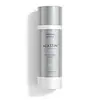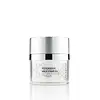What's inside
What's inside
 Key Ingredients
Key Ingredients

 Benefits
Benefits

 Concerns
Concerns

No concerns
 Ingredients Side-by-side
Ingredients Side-by-side

Water
Skin ConditioningGlycerin
HumectantPolyacrylate-13
Dimethicone
EmollientSodium Hyaluronate
HumectantSodium Hyaluronate Crosspolymer
HumectantOctapeptide-45
Skin ConditioningHexapeptide-11
Skin ConditioningTremella Fuciformis Sporocarp Extract
AntioxidantLactoferrin
Skin ConditioningTetradecyl Aminobutyroylvalylaminobutyric Urea Trifluoroacetate
Skin ConditioningXylitol
HumectantPropanediol
SolventAnhydroxylitol
HumectantPhospholipids
Skin ConditioningXylitylglucoside
HumectantHydroxymethoxyphenyl Decanone
Skin ConditioningTocopherol
AntioxidantAscorbyl Palmitate
AntioxidantCaprylyl Methicone
Skin ConditioningCaprylic/Capric Triglyceride
MaskingPolyisobutene
Caprylyl Glycol
EmollientDisodium EDTA
Betaine
HumectantPolysorbate 20
EmulsifyingEthylhexylglycerin
Skin ConditioningCaprylhydroxamic Acid
Sorbitan Isostearate
EmulsifyingHelianthus Annuus Seed Oil
EmollientLecithin
EmollientPentylene Glycol
Skin ConditioningMagnesium Chloride
Phenoxyethanol
PreservativePotassium Sorbate
PreservativeSodium Hydroxide
BufferingWater, Glycerin, Polyacrylate-13, Dimethicone, Sodium Hyaluronate, Sodium Hyaluronate Crosspolymer, Octapeptide-45, Hexapeptide-11, Tremella Fuciformis Sporocarp Extract, Lactoferrin, Tetradecyl Aminobutyroylvalylaminobutyric Urea Trifluoroacetate, Xylitol, Propanediol, Anhydroxylitol, Phospholipids, Xylitylglucoside, Hydroxymethoxyphenyl Decanone, Tocopherol, Ascorbyl Palmitate, Caprylyl Methicone, Caprylic/Capric Triglyceride, Polyisobutene, Caprylyl Glycol, Disodium EDTA, Betaine, Polysorbate 20, Ethylhexylglycerin, Caprylhydroxamic Acid, Sorbitan Isostearate, Helianthus Annuus Seed Oil, Lecithin, Pentylene Glycol, Magnesium Chloride, Phenoxyethanol, Potassium Sorbate, Sodium Hydroxide
Water
Skin ConditioningGlycerin
HumectantCaprylic/Capric Triglyceride
MaskingC13-15 Alkane
SolventSqualane
EmollientC12-16 Alcohols
EmollientCetearyl Alcohol
EmollientDimethicone
EmollientNiacinamide
SmoothingPalmitoyl Hexapeptide-12
Skin ConditioningPalmitoyl Tripeptide-1
Skin ConditioningAcetyl Tetrapeptide-2
Skin ConditioningPhosphatidylserine
Emulsion StabilisingOleuropein
AntioxidantCeramide NP
Skin ConditioningLinum Usitatissimum Seed Extract
PerfumingPlantago Lanceolata Leaf Extract
AntimicrobialPeucedanum Graveolens Extract
TonicButyrospermum Parkii Butter Extract
Skin ConditioningTremella Fuciformis Sporocarp Extract
AntioxidantHydroxymethoxyphenyl Decanone
Skin ConditioningBetaine
HumectantAscorbyl Palmitate
AntioxidantOlea Europaea Leaf Extract
PerfumingDunaliella Salina Extract
Skin ConditioningPersea Gratissima Fruit Extract
EmollientPhospholipids
Skin ConditioningBentonite
AbsorbentPalmitic Acid
EmollientHydrogenated Lecithin
EmulsifyingTocopherol
AntioxidantXanthan Gum
EmulsifyingCaprylyl Glycol
EmollientCaprylyl Methicone
Skin ConditioningButylene Glycol
HumectantLecithin
EmollientSclerotium Gum
Emulsion StabilisingPullulan
Polyglyceryl-10 Stearate
Skin ConditioningSucrose Stearate
EmollientDisodium EDTA
Ethylhexylglycerin
Skin ConditioningCaprylhydroxamic Acid
Phenoxyethanol
PreservativeWater, Glycerin, Caprylic/Capric Triglyceride, C13-15 Alkane, Squalane, C12-16 Alcohols, Cetearyl Alcohol, Dimethicone, Niacinamide, Palmitoyl Hexapeptide-12, Palmitoyl Tripeptide-1, Acetyl Tetrapeptide-2, Phosphatidylserine, Oleuropein, Ceramide NP, Linum Usitatissimum Seed Extract, Plantago Lanceolata Leaf Extract, Peucedanum Graveolens Extract, Butyrospermum Parkii Butter Extract, Tremella Fuciformis Sporocarp Extract, Hydroxymethoxyphenyl Decanone, Betaine, Ascorbyl Palmitate, Olea Europaea Leaf Extract, Dunaliella Salina Extract, Persea Gratissima Fruit Extract, Phospholipids, Bentonite, Palmitic Acid, Hydrogenated Lecithin, Tocopherol, Xanthan Gum, Caprylyl Glycol, Caprylyl Methicone, Butylene Glycol, Lecithin, Sclerotium Gum, Pullulan, Polyglyceryl-10 Stearate, Sucrose Stearate, Disodium EDTA, Ethylhexylglycerin, Caprylhydroxamic Acid, Phenoxyethanol
Ingredients Explained
These ingredients are found in both products.
Ingredients higher up in an ingredient list are typically present in a larger amount.
Ascorbyl Palmitate is created by combining pure Vitamin C and palmitic acid. It is an antioxidant and helps reduce hyperpigmentation.
This ingredient is a more stable version of Vitamin C, meaning it does not disintegrate as quickly when exposed to sunlight. However, studies show it does not penetrate skin as well as pure Vitamin C.
Ascorbyl Palmitate is oil soluble.
Read more about other types of Vitamin C:
Learn more about Ascorbyl PalmitateBetaine is a common humectant (a substance that promotes retention of moisture). It's known to be gentle on the skin and can help balance hydration.
This ingredient is best for improving hydration and soothing irritated skin. Studies also show it helps even out skin tone.
Fun fact: Betaine is naturally created in the skin and body. The kind found within cosmetic products can be either plant-derived or synthetic.
Another name for betaine is trimethylglycine.
Learn more about BetaineCaprylhydroxamic Acid is a chelating agent.
Chelating agents help prevent metal ions from binding to other ingredients. This helps prevent unwanted reactions and effects from using the product.
Caprylhydroxamic Acid is often used with natural antimicrobial products as an alternative to preservatives.
Learn more about Caprylhydroxamic AcidThis ingredient is an emollient, solvent, and texture enhancer. It is considered a skin-softener by helping the skin prevent moisture loss.
It helps thicken a product's formula and makes it easier to spread by dissolving clumping compounds.
Caprylic Triglyceride is made by combining glycerin with coconut oil, forming a clear liquid.
While there is an assumption Caprylic Triglyceride can clog pores due to it being derived from coconut oil, there is no research supporting this.
Learn more about Caprylic/Capric TriglycerideCaprylyl Glycol is a humectant and emollient, meaning it attracts and preserves moisture.
It is a common ingredient in many products, especially those designed to hydrate skin. The primary benefits are retaining moisture, skin softening, and promoting a healthy skin barrier.
Though Caprylyl Glycol is an alcohol derived from fatty acids, it is not the kind that can dry out skin.
This ingredient is also used as a preservative to extend the life of products. It has slight antimicrobial properties.
Learn more about Caprylyl GlycolCaprylyl Methicone is a type of silicone.
It helps soften and soothe the skin by creating a thin film on top. This film helps trap moisture, keeping your skin hydrated.
Dimethicone is a type of synthetic silicone created from natural materials such as quartz.
What it does:
Dimethicone comes in different viscosities:
Depending on the viscosity, dimethicone has different properties.
Ingredients lists don't always show which type is used, so we recommend reaching out to the brand if you have questions about the viscosity.
This ingredient is unlikely to cause irritation because it does not get absorbed into skin. However, people with silicone allergies should be careful about using this ingredient.
Note: Dimethicone may contribute to pilling. This is because it is not oil or water soluble, so pilling may occur when layered with products. When mixed with heavy oils in a formula, the outcome is also quite greasy.
Learn more about DimethiconeDisodium EDTA plays a role in making products more stable by aiding other preservatives.
It is a chelating agent, meaning it neutralizes metal ions that may be found in a product.
Disodium EDTA is a salt of edetic acid and is found to be safe in cosmetic ingredients.
Learn more about Disodium EDTAEthylhexylglycerin (we can't pronounce this either) is commonly used as a preservative and skin softener. It is derived from glyceryl.
You might see Ethylhexylglycerin often paired with other preservatives such as phenoxyethanol. Ethylhexylglycerin has been found to increase the effectiveness of these other preservatives.
Glycerin is already naturally found in your skin. It helps moisturize and protect your skin.
A study from 2016 found glycerin to be more effective as a humectant than AHAs and hyaluronic acid.
As a humectant, it helps the skin stay hydrated by pulling moisture to your skin. The low molecular weight of glycerin allows it to pull moisture into the deeper layers of your skin.
Hydrated skin improves your skin barrier; Your skin barrier helps protect against irritants and bacteria.
Glycerin has also been found to have antimicrobial and antiviral properties. Due to these properties, glycerin is often used in wound and burn treatments.
In cosmetics, glycerin is usually derived from plants such as soybean or palm. However, it can also be sourced from animals, such as tallow or animal fat.
This ingredient is organic, colorless, odorless, and non-toxic.
Glycerin is the name for this ingredient in American English. British English uses Glycerol/Glycerine.
Learn more about GlycerinHydroxymethoxyphenyl Decanone is a synthetically created molecule made to mimic ginger extract.
Ginger has anti-inflammatory properties and helps to soothe skin.
According to one study, it is an HA booster, antioxidant, and anti-irritant.
In this study, this ingredient was able to stimulate higher hyaluronic acid levels of the dermal and epidermal layers on a skin-like model. Hyaluronic Acid is a humectant, which means it helps attract moisture to your skin. Humectants help keep skin hydrated.
As an antioxidant, Hydroxymethoxyphenyl Decanone is able to fight off damage from free-radical molecules.
Learn more about Hydroxymethoxyphenyl DecanoneLecithin is a term for a group of substances found in the cell membranes of plants, animals, and humans. They are made up of mixture of phospholipids.
This ingredient has emollient and emulsifying properties.
As an emollient, lecithen helps soften the skin and creates a barrier to keep moisture in.
As an emulsifier, it also helps prevent water and oil ingredients from separating. Lecithin can also help ingredients be better absorbed by the skin.
This is because the phospholipids in lecithin produce liposomes. Liposomes help other ingredients get through the skin barrier.
Depending on the source of this ingredient, lecithin may not be fungal acne safe. This is because some sources of lecithin come from soybean oil, which may feed the malassezia yeast that feeds fungal acne.
We recommend reaching out to the brand you are purchasing from to inquire about the source of their lecithin.
Some other names for this ingredient include soy lecithin and deoiled soy lecithin.
Learn more about LecithinPhenoxyethanol is a preservative that has germicide, antimicrobial, and aromatic properties. Studies show that phenoxyethanol can prevent microbial growth. By itself, it has a scent that is similar to that of a rose.
It's often used in formulations along with Caprylyl Glycol to preserve the shelf life of products.
Phospholipids are naturally found in our skin as they are the main component of cell membranes. Phospholipids have humectant, emollient, antioxidant properties.
Phospholipids are complex lipids that contain glycerin, two fatty acids, and a phosphate group. Some foods that contain phospholipids include soybeans and milk. The phospholipids found in soy come from Lecithin. This ingredient can also be synthetically created.
Due to their hygroscopic nature, they act as both humectants and emollients. Humectants draw moisture from the air to your skin, while emollients help trap moisture in.
The phospholipids in our skin can be naturally depleted. Replenishing the phospholipids in our skin can help hydrate your skin.
Studies show phospholipids display antioxidant activity and may help with reducing the signs of aging.
This ingredient is non-occlusive.
Some types of phospholipids:
Learn more about PhospholipidsTocopherol (also known as Vitamin E) is a common antioxidant used to help protect the skin from free-radicals and strengthen the skin barrier. It's also fat soluble - this means our skin is great at absorbing it.
Vitamin E also helps keep your natural skin lipids healthy. Your lipid skin barrier naturally consists of lipids, ceramides, and fatty acids. Vitamin E offers extra protection for your skin’s lipid barrier, keeping your skin healthy and nourished.
Another benefit is a bit of UV protection. Vitamin E helps reduce the damage caused by UVB rays. (It should not replace your sunscreen). Combining it with Vitamin C can decrease sunburned cells and hyperpigmentation after UV exposure.
You might have noticed Vitamin E + C often paired together. This is because it is great at stabilizing Vitamin C. Using the two together helps increase the effectiveness of both ingredients.
There are often claims that Vitamin E can reduce/prevent scarring, but these claims haven't been confirmed by scientific research.
Learn more about TocopherolTremella Fuciformis is also known as snow mushroom. This ingredient comes from the sporocarp, which is also the fruit body of the fungi.
Snow mushroom has hydrating and antioxidant properties.
According to a manufacturer, the glucuronic acid of this ingredient promotes the presence of hyaluronic acid in the middle layer of skin to keep that layer sufficiently hydrated.
Learn more about Tremella Fuciformis Sporocarp ExtractWater. It's the most common cosmetic ingredient of all. You'll usually see it at the top of ingredient lists, meaning that it makes up the largest part of the product.
So why is it so popular? Water most often acts as a solvent - this means that it helps dissolve other ingredients into the formulation.
You'll also recognize water as that liquid we all need to stay alive. If you see this, drink a glass of water. Stay hydrated!
Learn more about Water